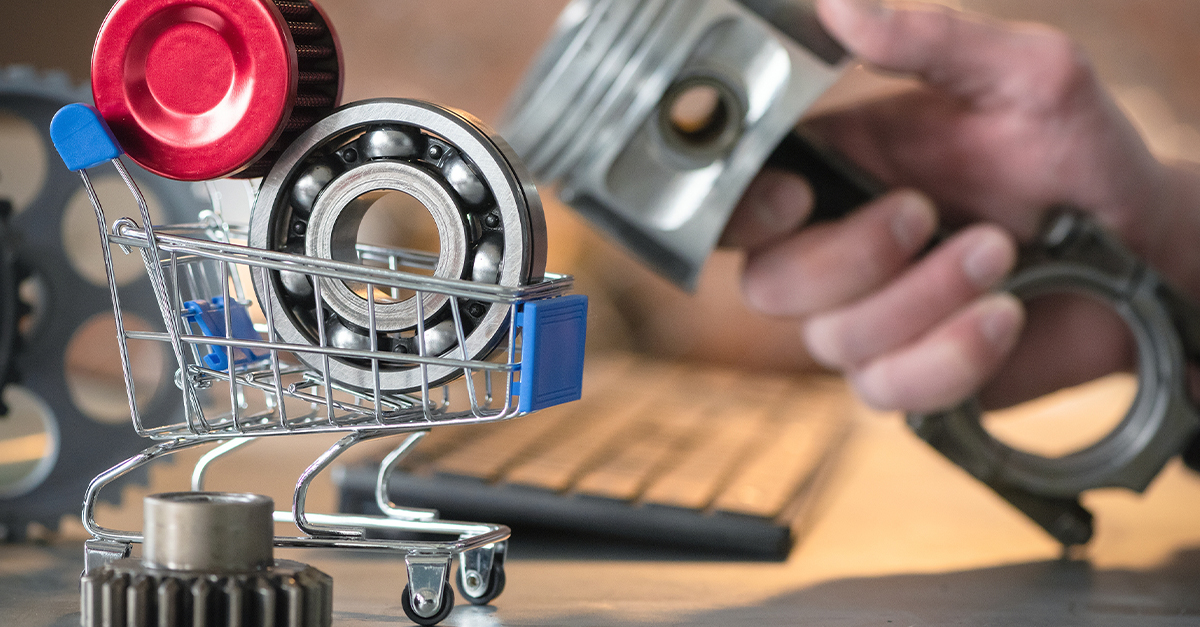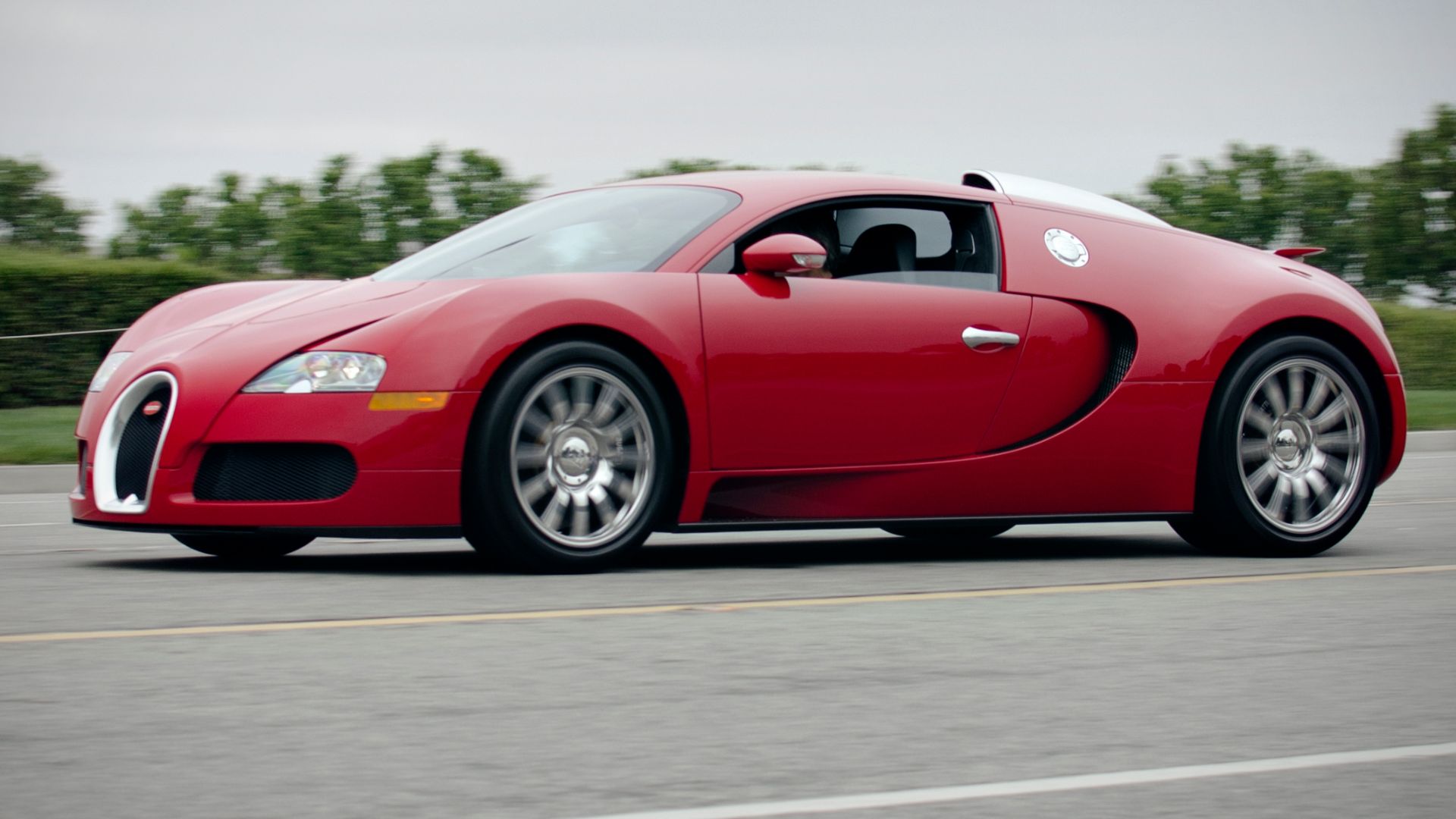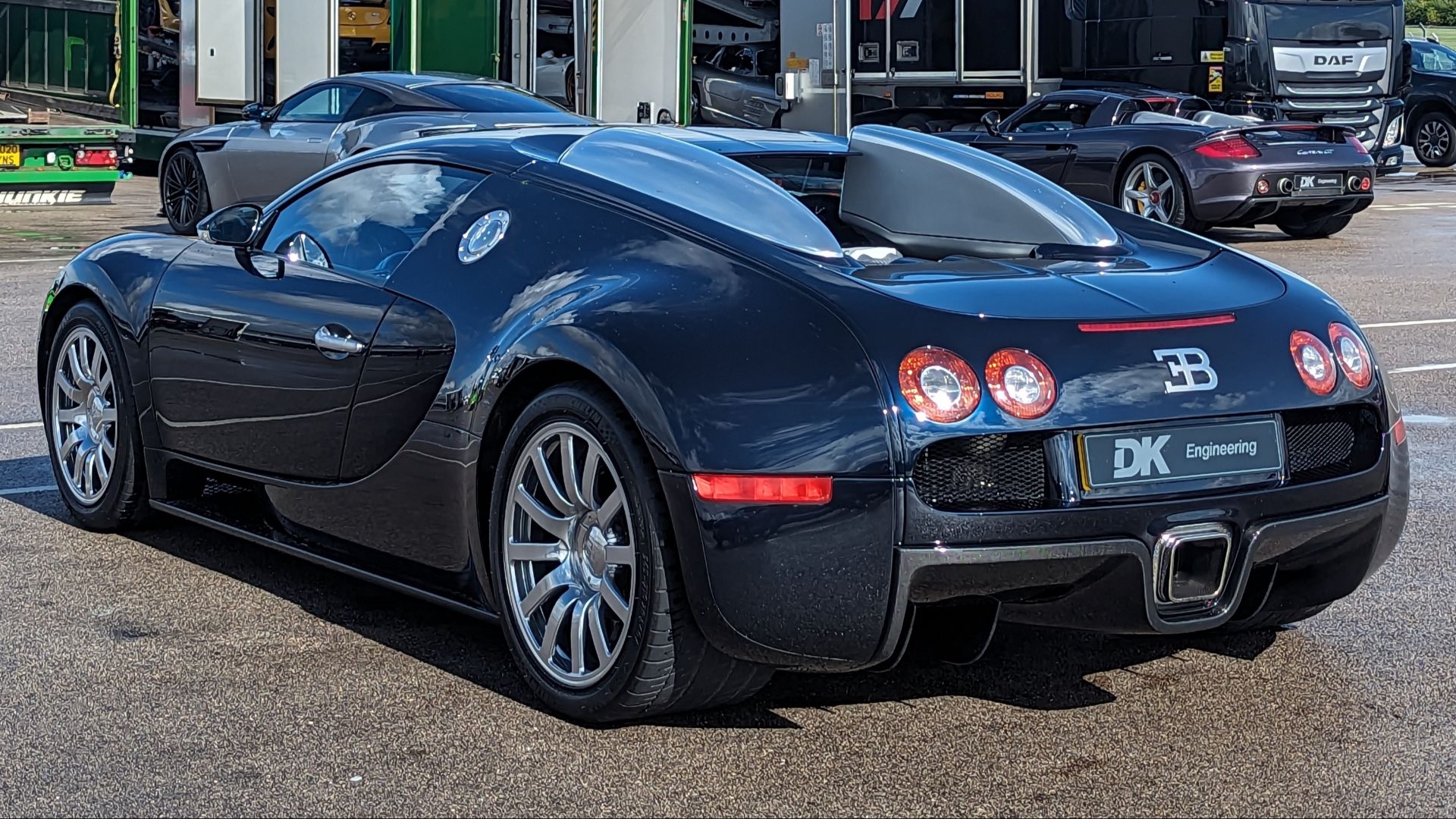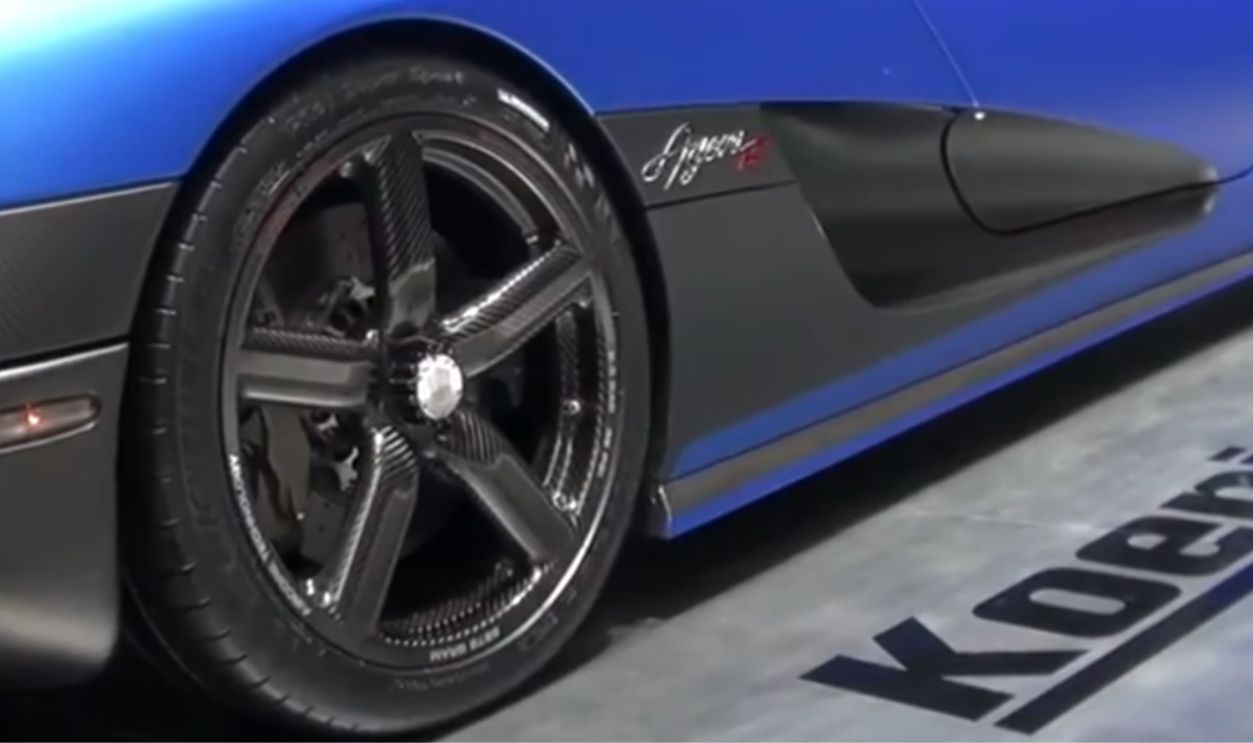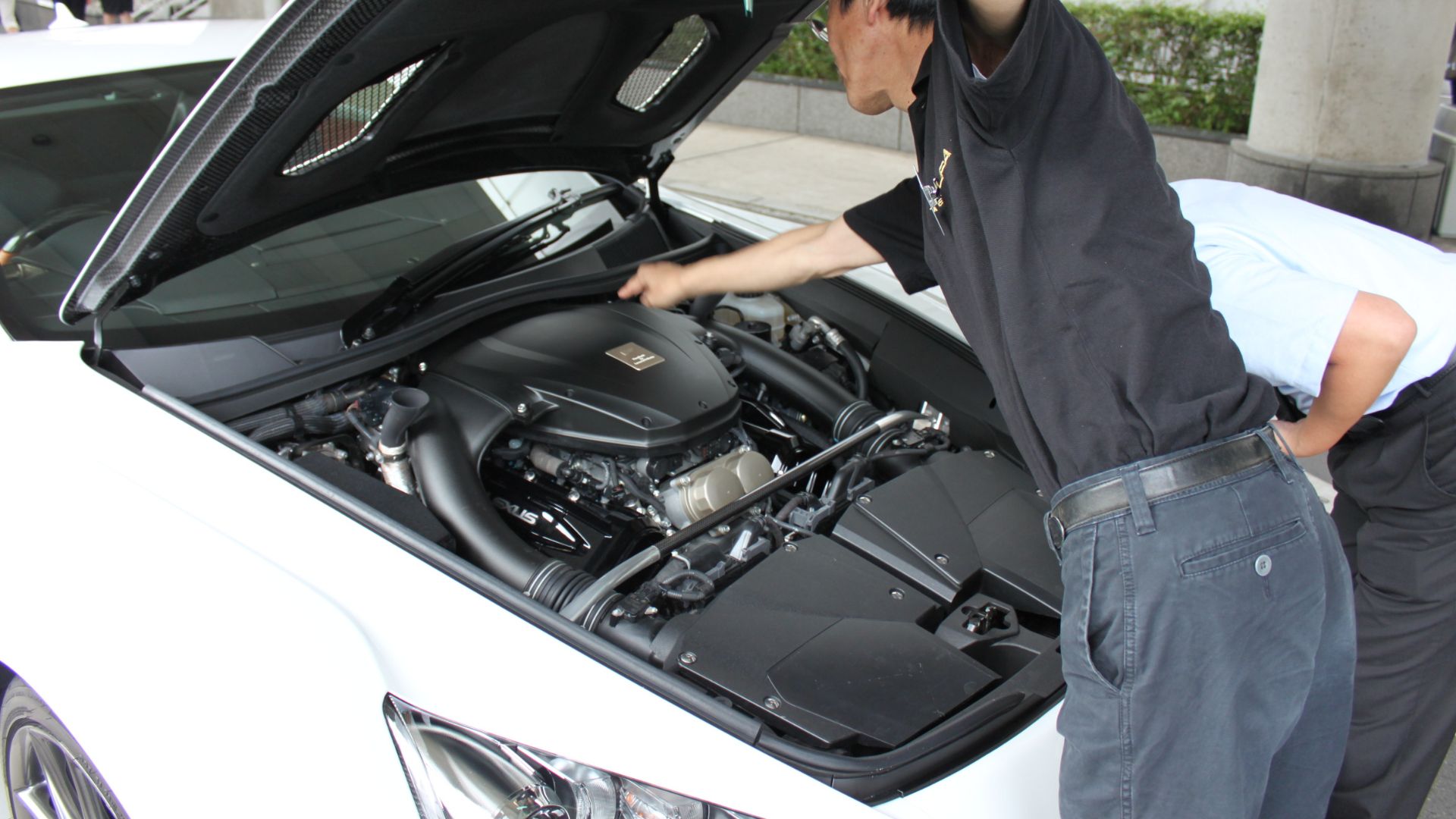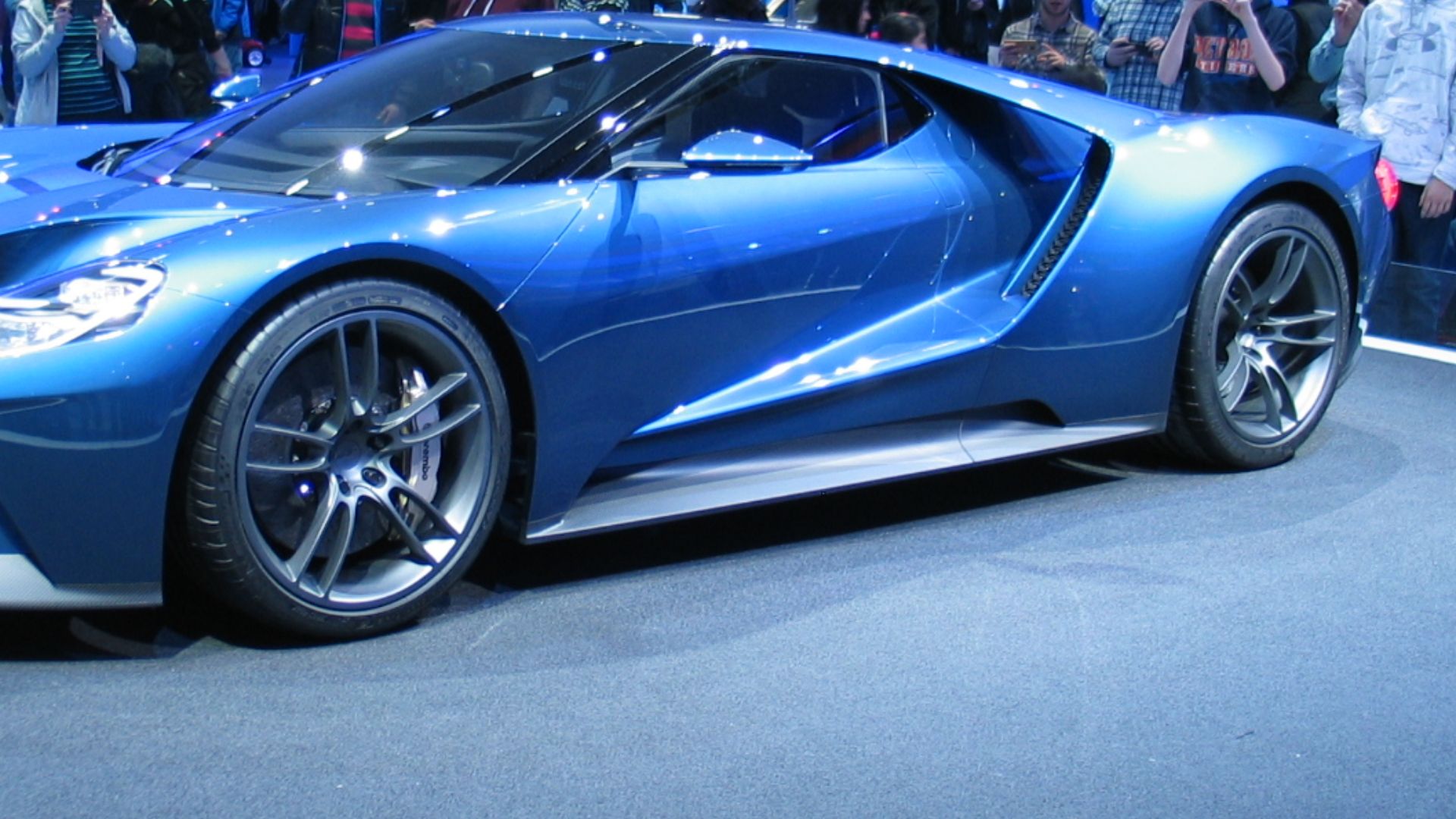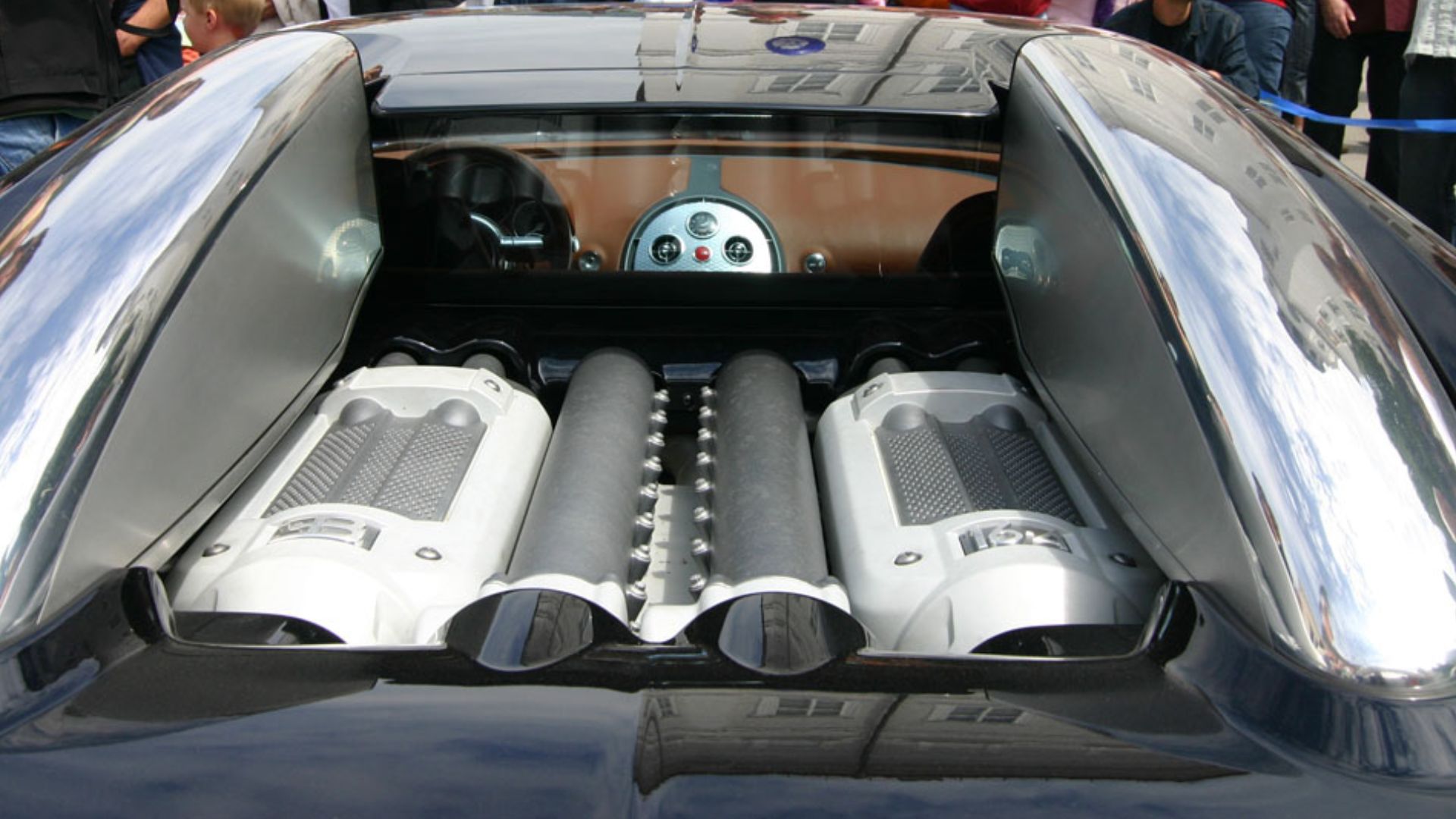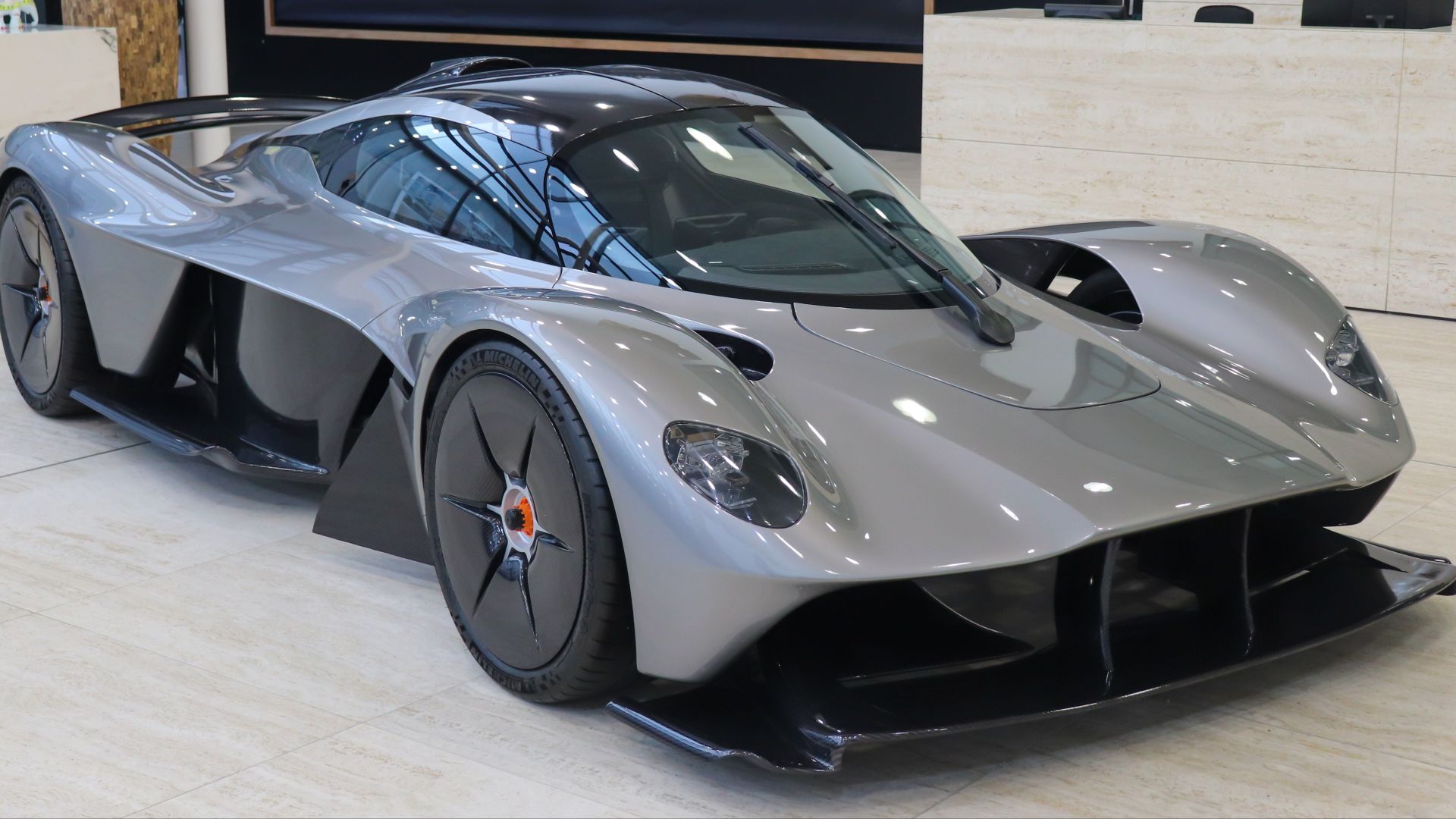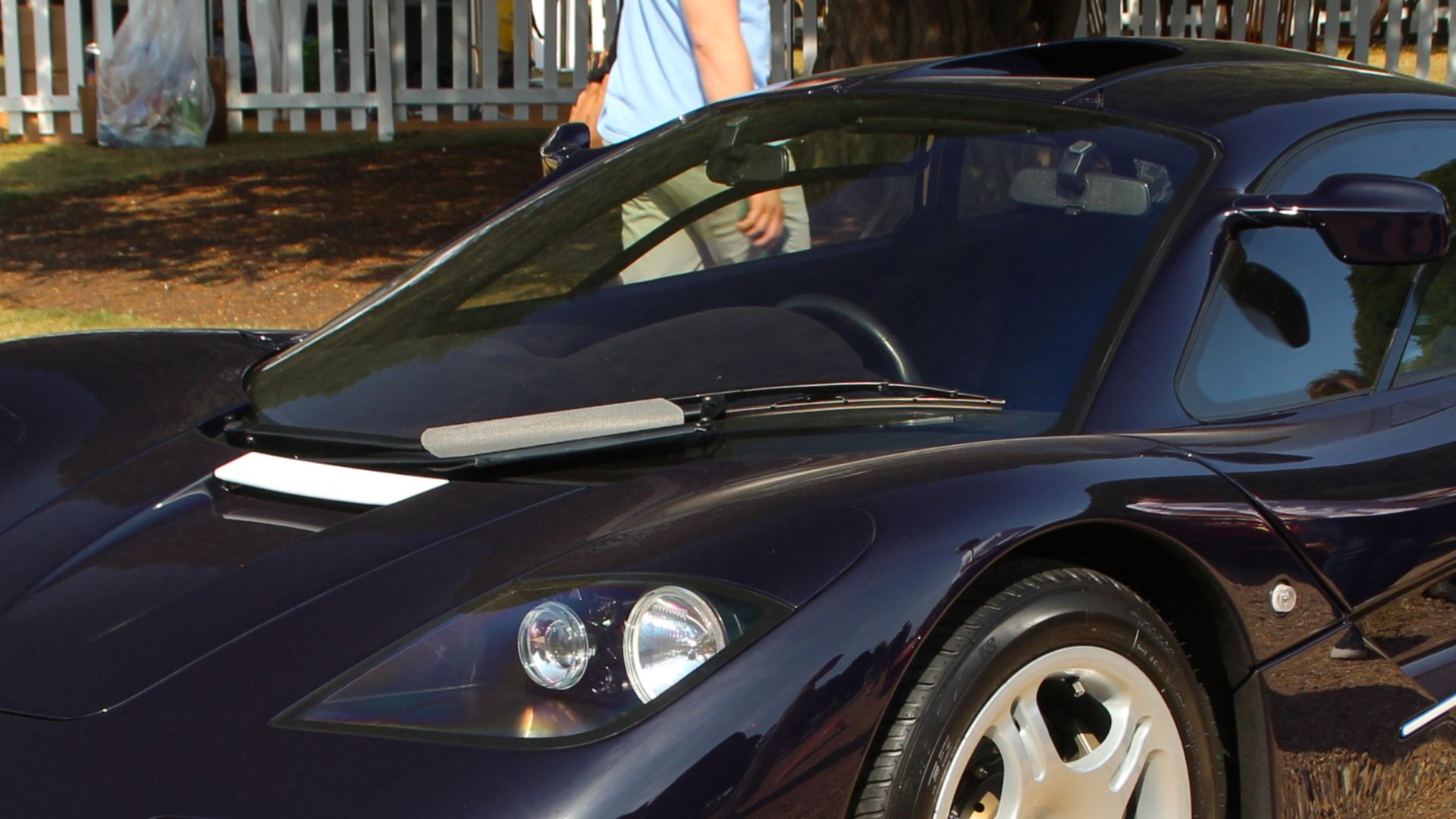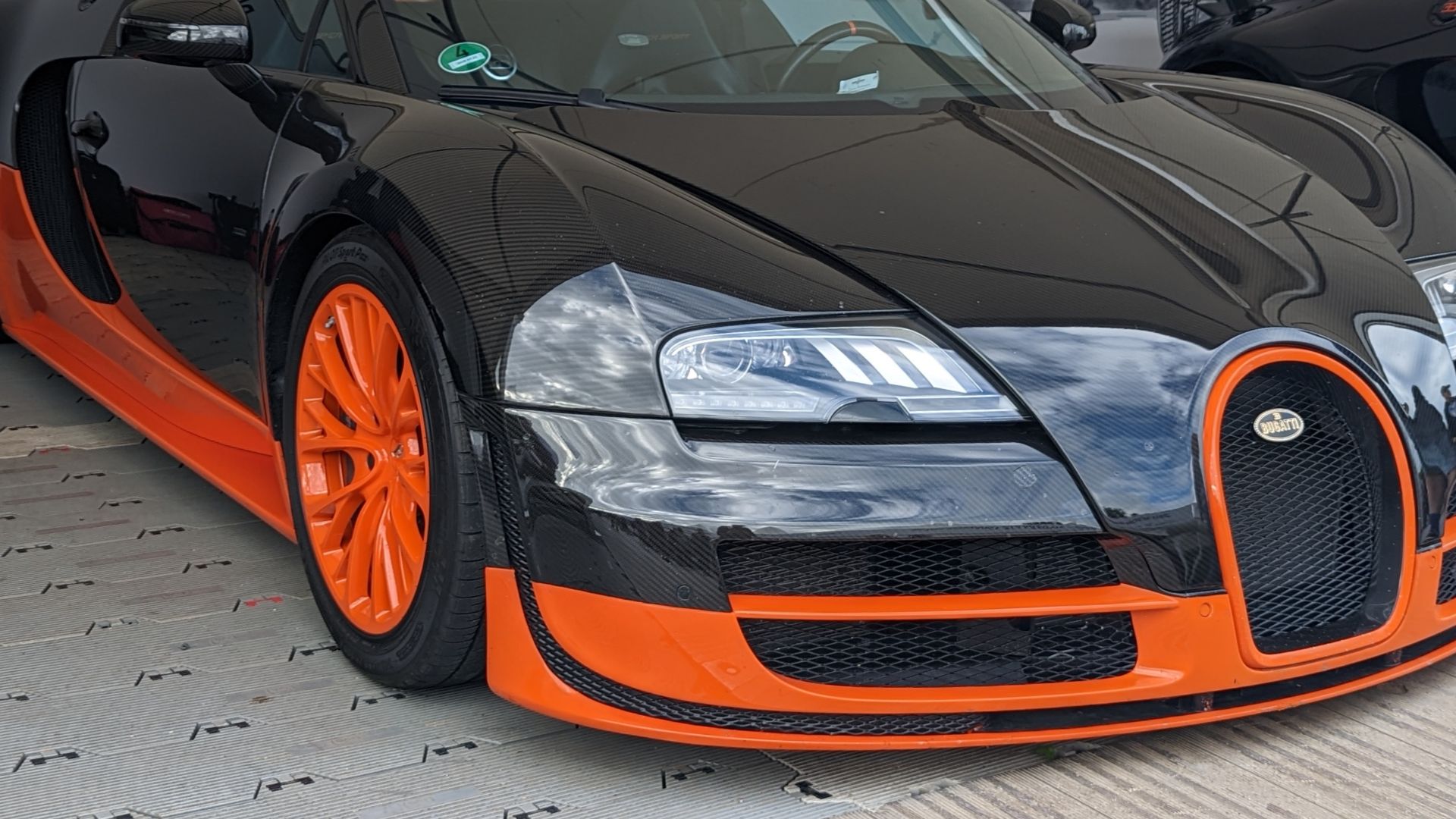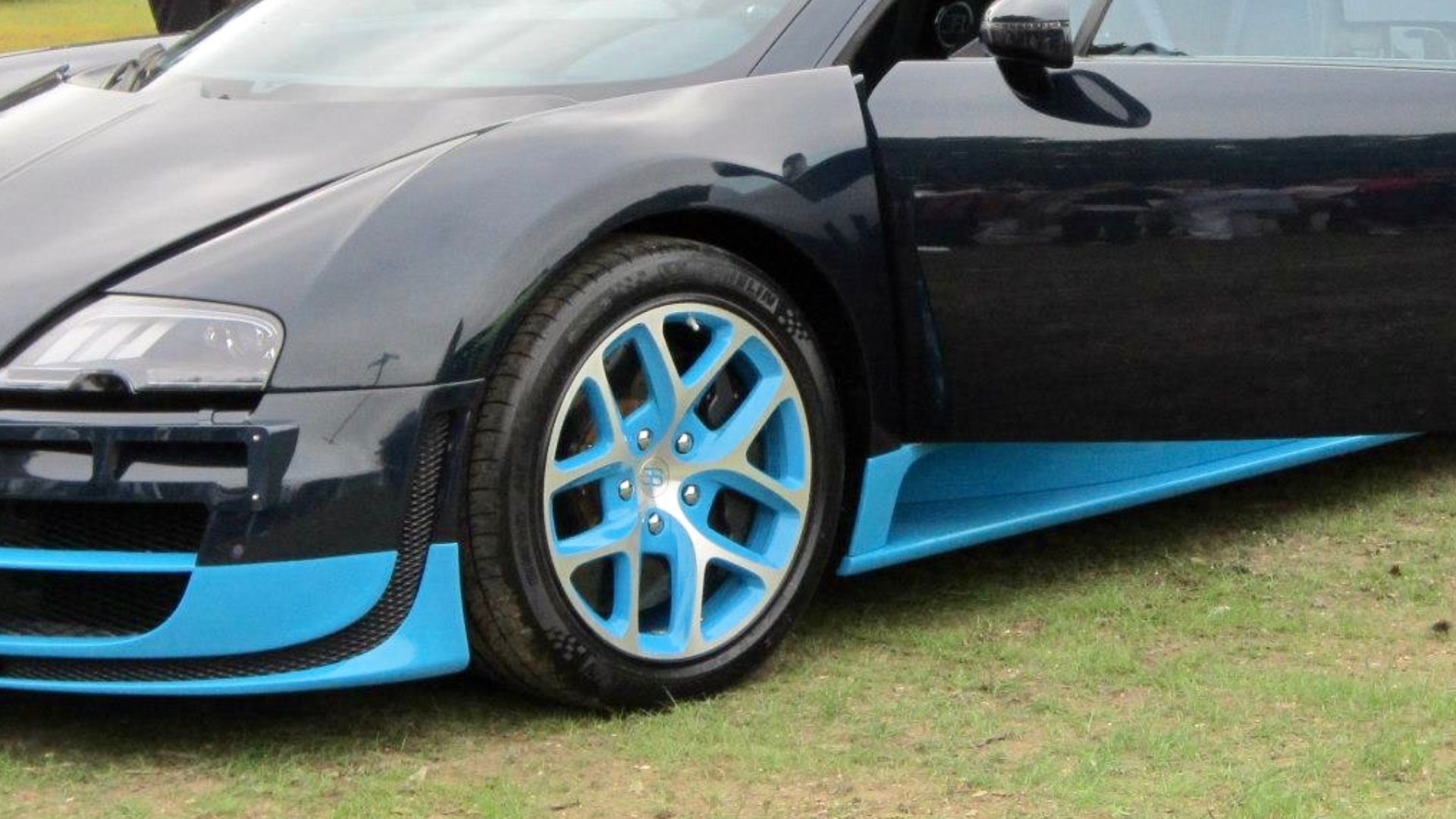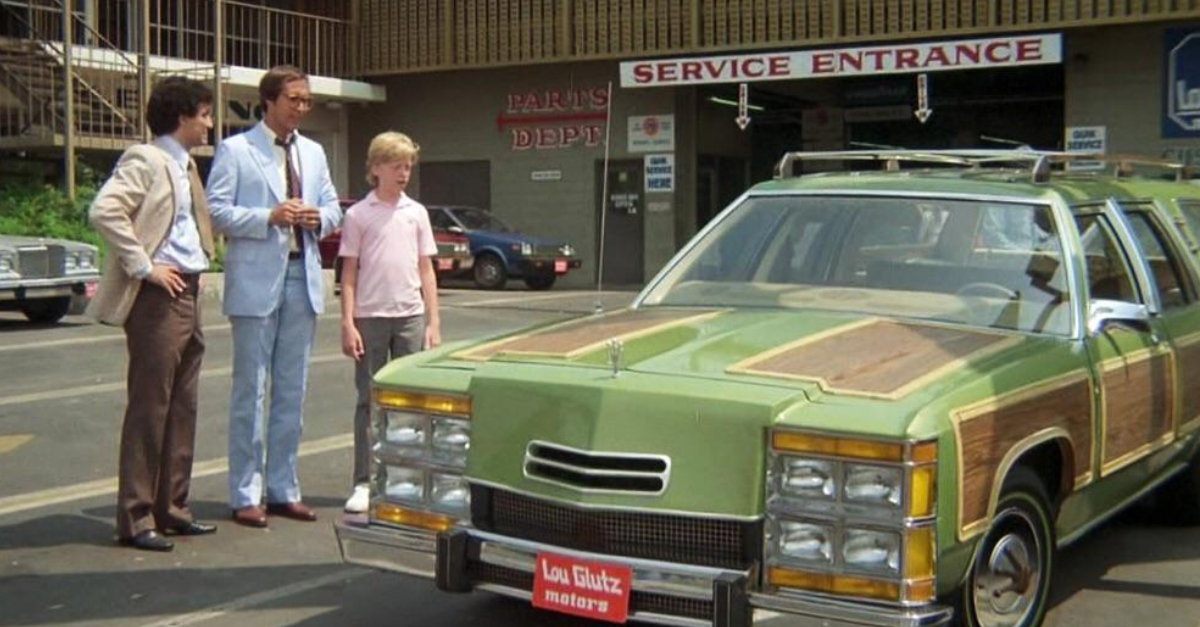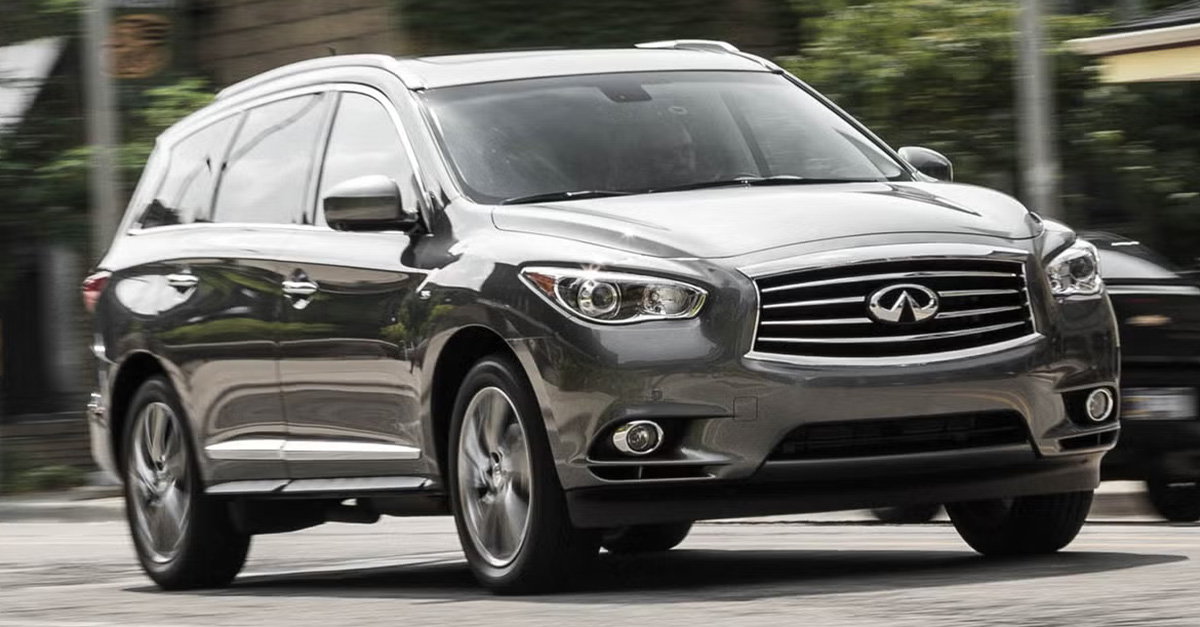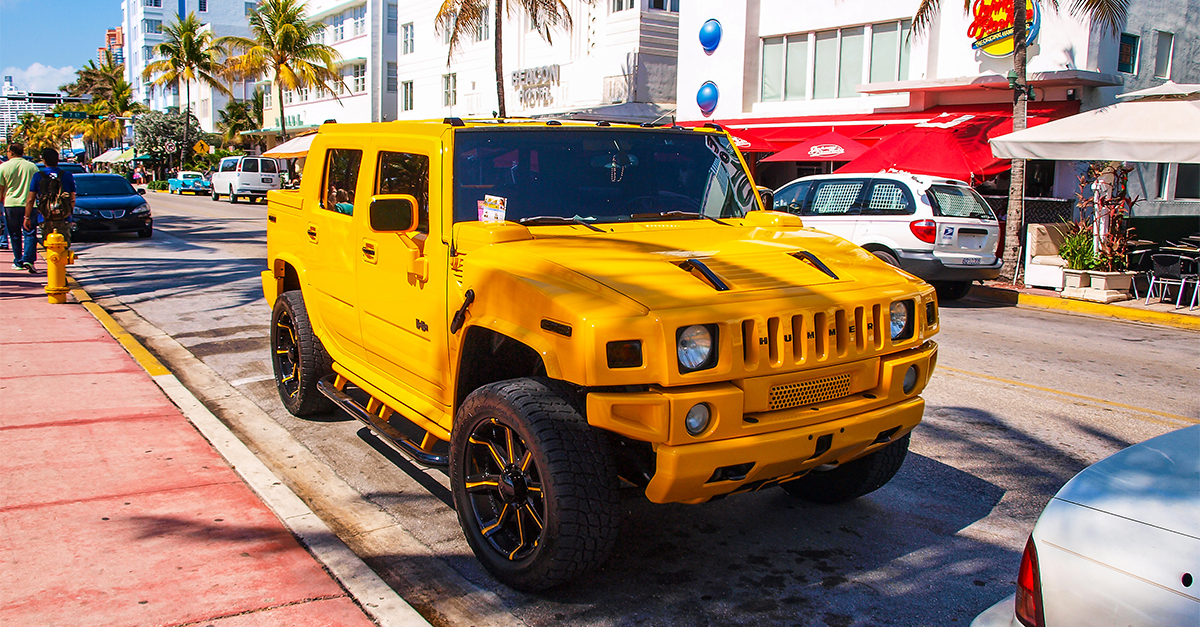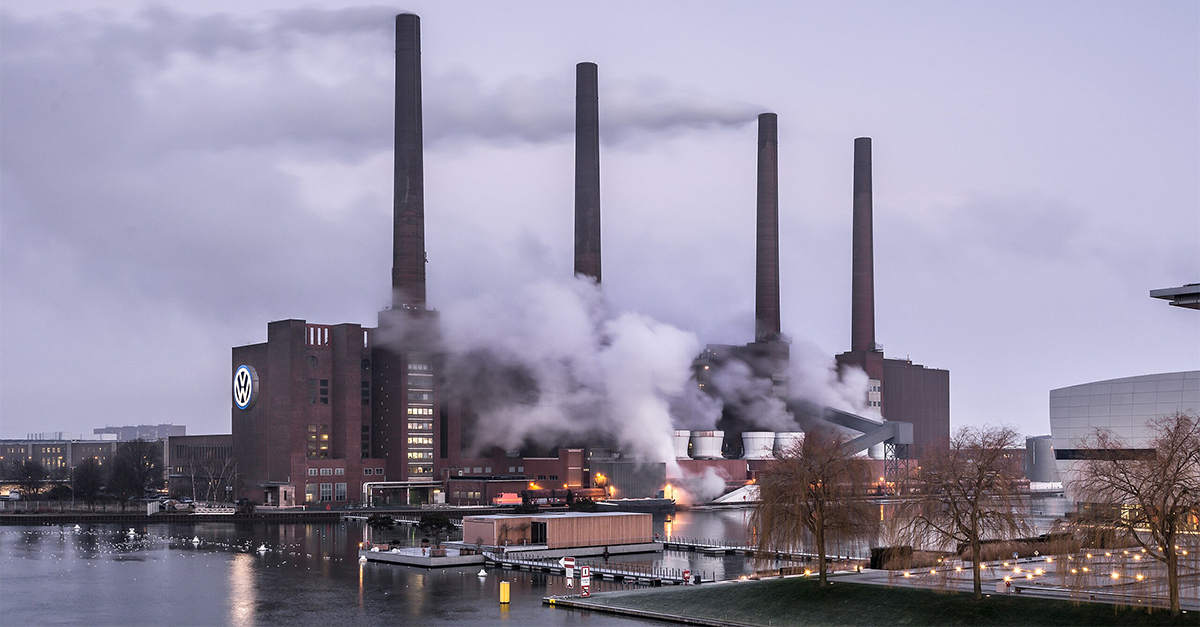And You Wince At Replacing Your Taillight...
When you think about expensive cars, your mind probably jumps to the million-dollar price tags of hypercars and classics. But here’s the kicker: sometimes the parts of these machines cost as much—or more—than an entire new car. We’re talking windshields worth more than luxury vacations, tires that rival down payments on a house, and fuel tanks with a price tag that’ll make you gulp premium. In this piece, we’re diving into the most valuable car parts in the world—those individual components so rare, so complex, and so mission-critical that they carry jaw-dropping price tags of their own.
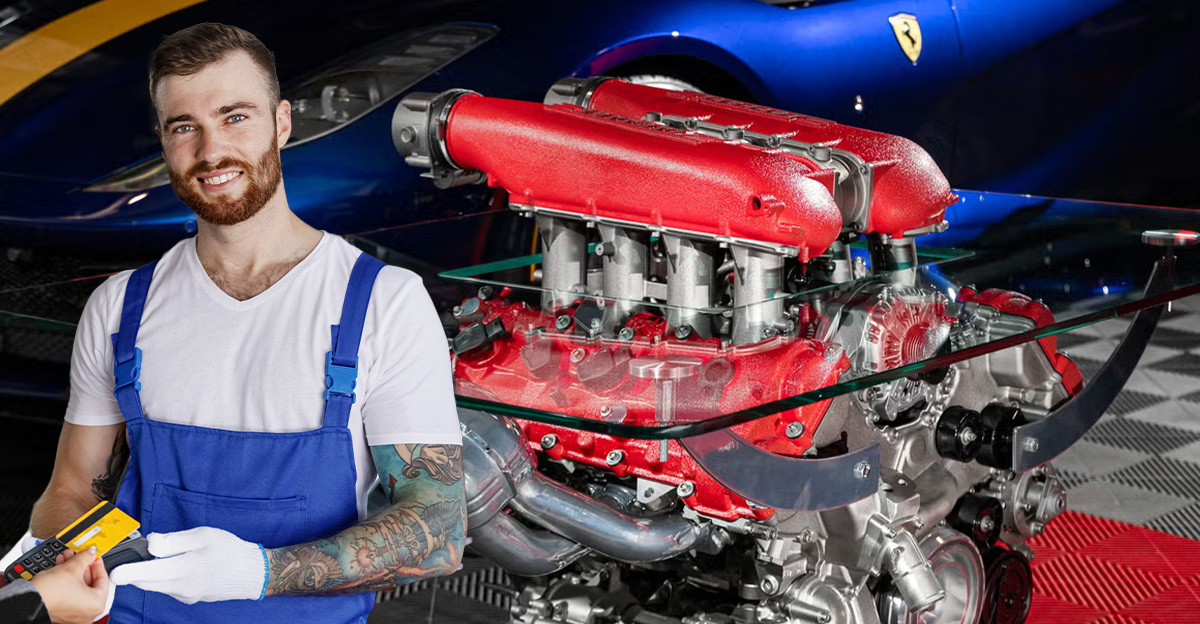
Bugatti Veyron: Tires That Cost More Than a Civic
When a car is engineered to cruise at 250+ mph, even the “consumables” are wild. A set of Michelin PAX tires for the Bugatti Veyron is about $42,000, specially built to cope with speed, heat, and sidewall stress. That price tag is documented—and not a rumor.
Bugatti Veyron: Wheels You Replace… Regularly
Bugatti reportedly recommends replacing the entire set of wheels every ~10,000 miles, at an eye-watering ~$50,000. The rationale: microscopic deformation at extreme speed that can compromise bead seating. Owners and outlets have repeated this maintenance reality for years.
Bugatti Veyron: A Fuel Tank That’s a Luxury Item
The aluminum fuel tank is among the Veyron’s priciest single components to replace: about €17,904 (~$20,000) for the tank plus ~€20,000 in labor, bringing the installed total to ~€37,904 (~$43,000) per an EPA-linked parts list surfaced by multiple publications.
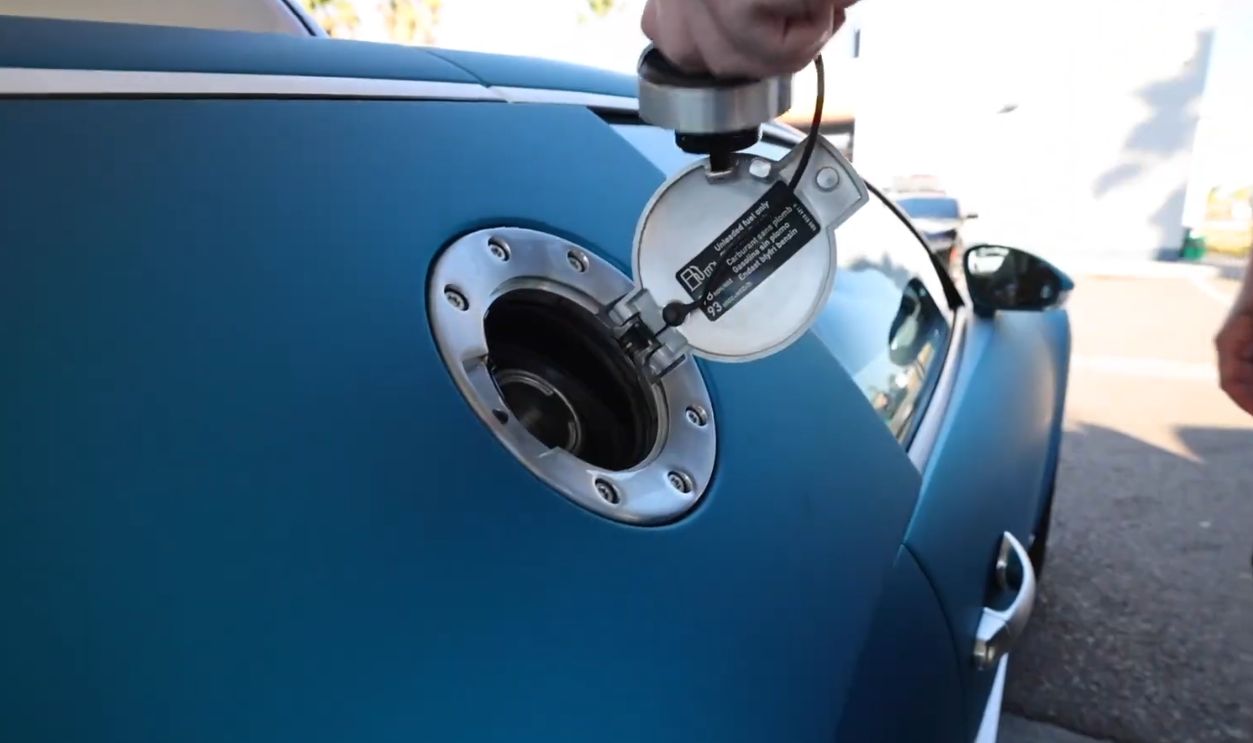 The INSANE Service Cost of a Bugatti Veyron, TheStradman
The INSANE Service Cost of a Bugatti Veyron, TheStradman
McLaren F1: A $33,000 Pane of Glass
The most revered 1990s supercar also carries one of the priciest windshields. Replacing an F1’s windshield runs roughly $33,000 (about $25k for the glass, ~$8k install), confirmed to Motor1 by a source familiar with parts pricing and echoed by other reputable outlets.
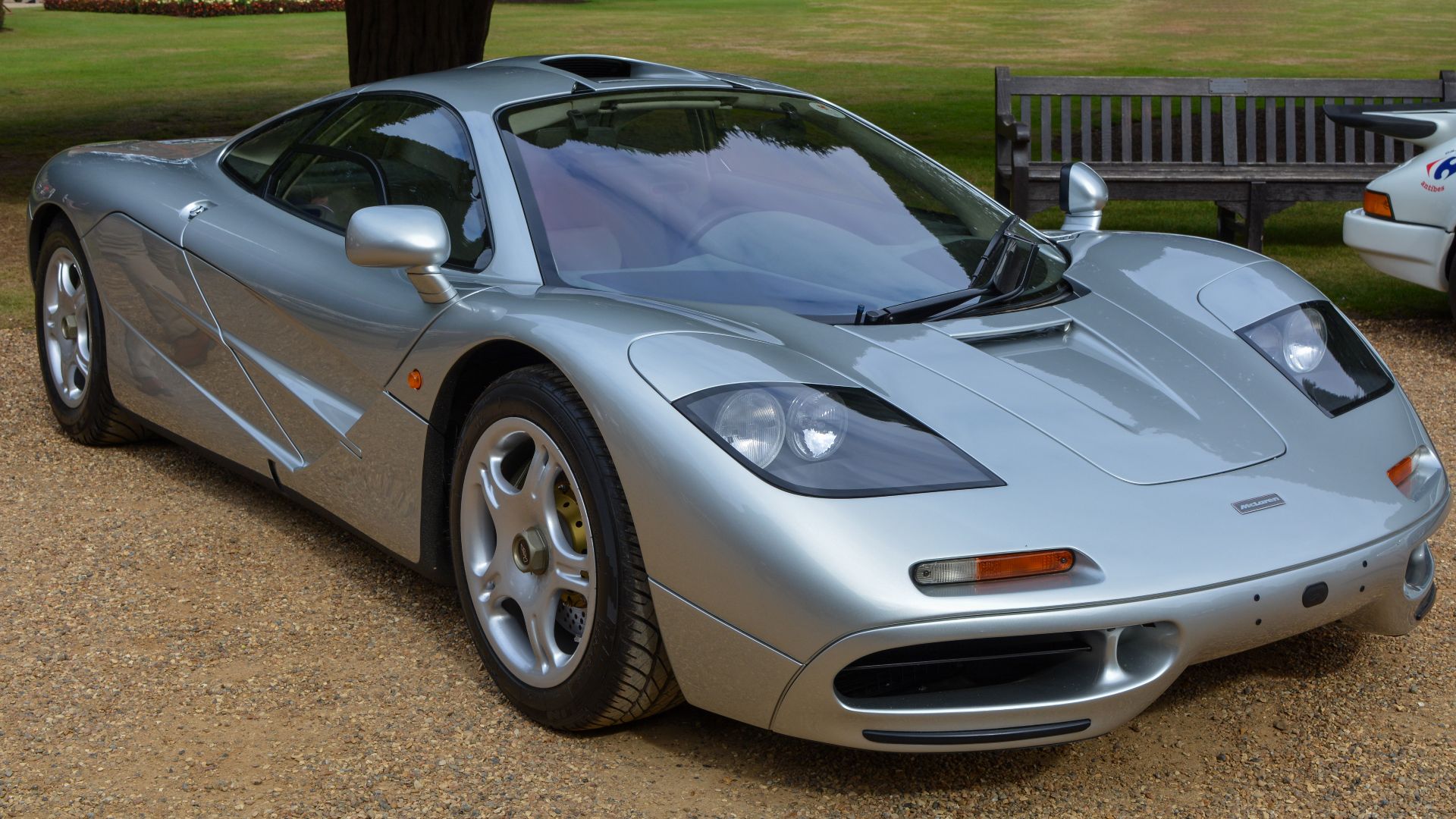 Chelsea Jay, Wikimedia Commons
Chelsea Jay, Wikimedia Commons
Koenigsegg “Aircore” Carbon Wheels: Ultralight, Ultra-Pricey
Koenigsegg’s one-piece, hollow carbon-fiber “Aircore” wheels pioneered on the Agera/One:1 save massive unsprung weight and are feats of engineering. Sets have been reported around $50,000, and the brand’s own tech brief explains why they’re special.
Porsche “PCCB” Carbon-Ceramic Brakes: The $20K–$25K Brake Job
Porsche’s PCCB brakes are stupendous on track—and stupendously expensive when you eventually replace discs and pads. Owners and specialists peg full replacements from ~$15,000 to $25,000+, with front rotors alone north of ~$10–12K on some models. An enthusiast parts breakdown for a Taycan totals ~$21,000 in parts before labor.
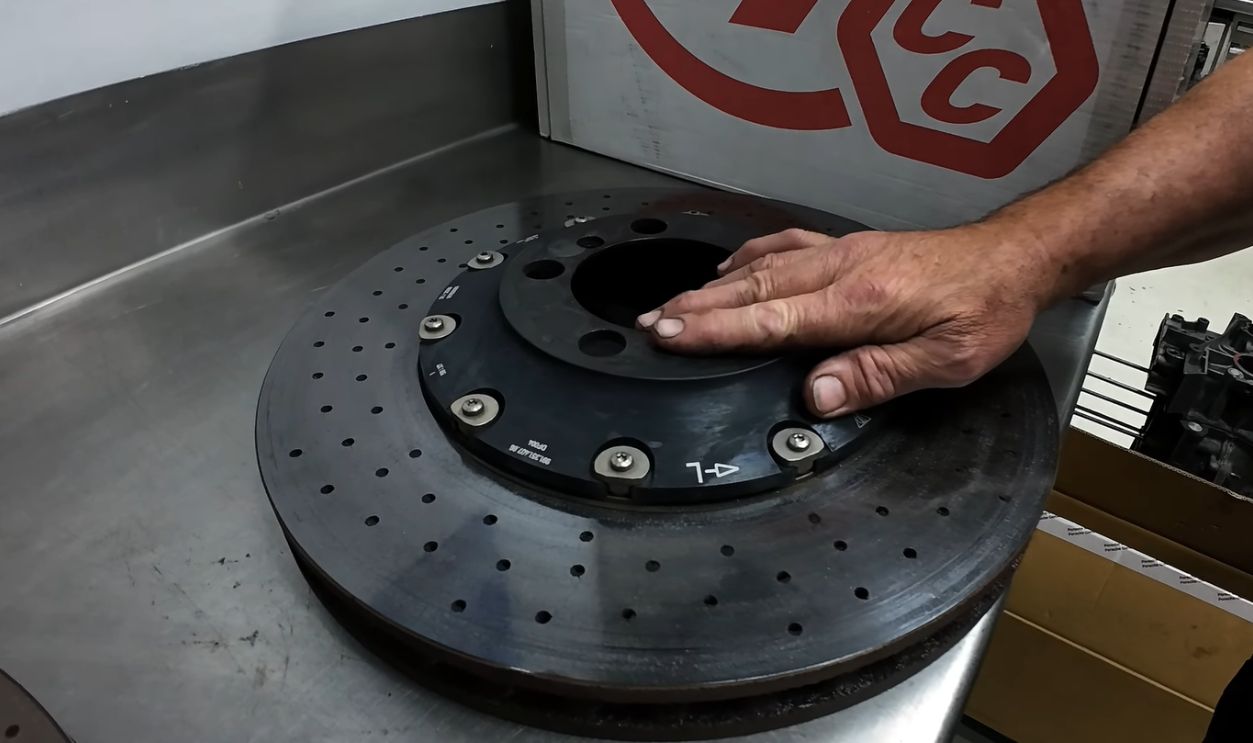 Surface Transforms vs PCCB vs OEM Steel - Best Porsche Brakes?, PR Technology
Surface Transforms vs PCCB vs OEM Steel - Best Porsche Brakes?, PR Technology
Ferrari Hybrids: Factory High-Voltage Battery Replacements
Ferrari now offers warranty programs that replace HV battery packs in the 8th and 16th year to preserve performance and resale value. While Maranello doesn’t publish a battery price, the program costs ~€7,000 per year as part of a broader warranty package. Even Ferrari knows the battery is one of the costliest “parts” on a modern exotic.
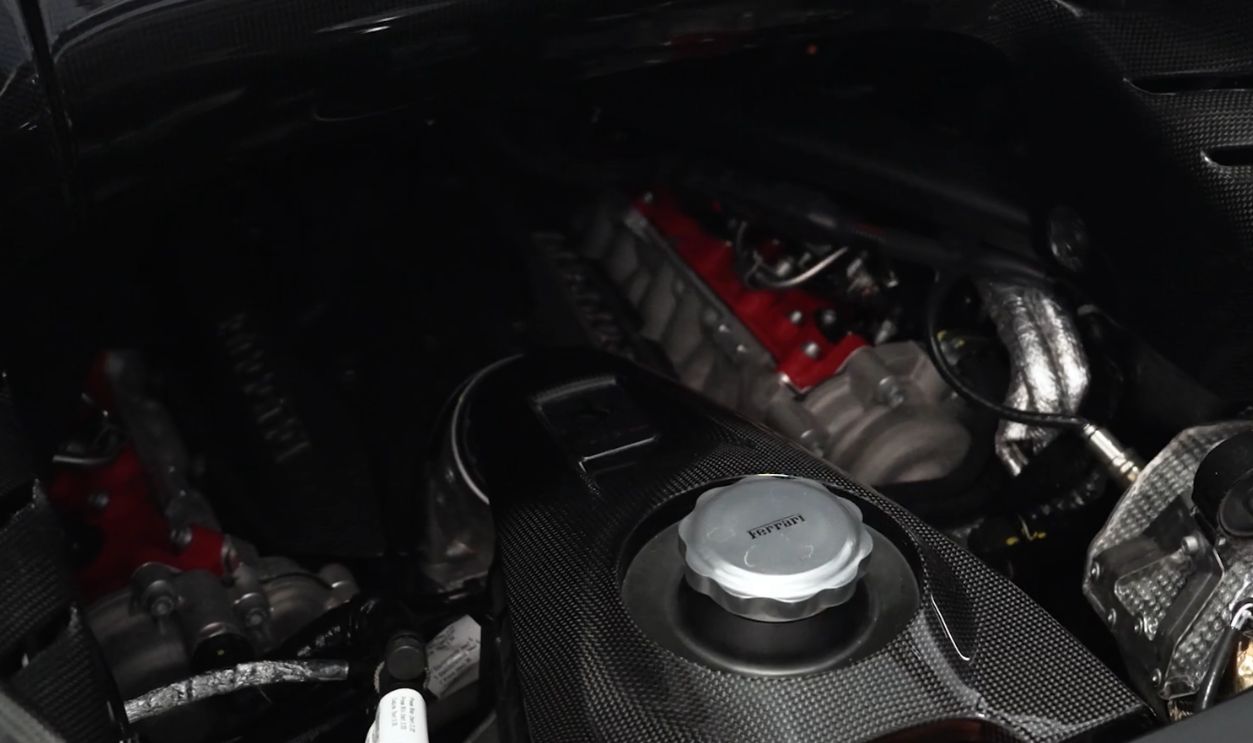 Ferrari Hyper Hybrids: 296 & SF90 - Ferrari Quebec, Ferrari Quebec
Ferrari Hyper Hybrids: 296 & SF90 - Ferrari Quebec, Ferrari Quebec
Lexus LFA: An $88,000 V10 Long-Block
Hand-built, titanium-valved V10s aren’t cheap. IMSA’s buyer’s guide reports the LFA’s 4.8-liter V10 long-block at about $88,000. Other LFA parts are similarly dear—$3,800 carbon-ceramic rotors, $9,000 windshield, and $20,000 bumpers/fenders. The world’s greatest Yamaha-tuned soundtrack does have a line item.
Ferrari SF90: $27,456 for a Front Bumper
Hybrid hyper-Ferraris bring hyper prices for bodywork. A genuine OEM front bumper for an SF90 Spider lists at $27,455.96 at a leading Ferrari parts distributor. That’s before paint, sensors, and labor.
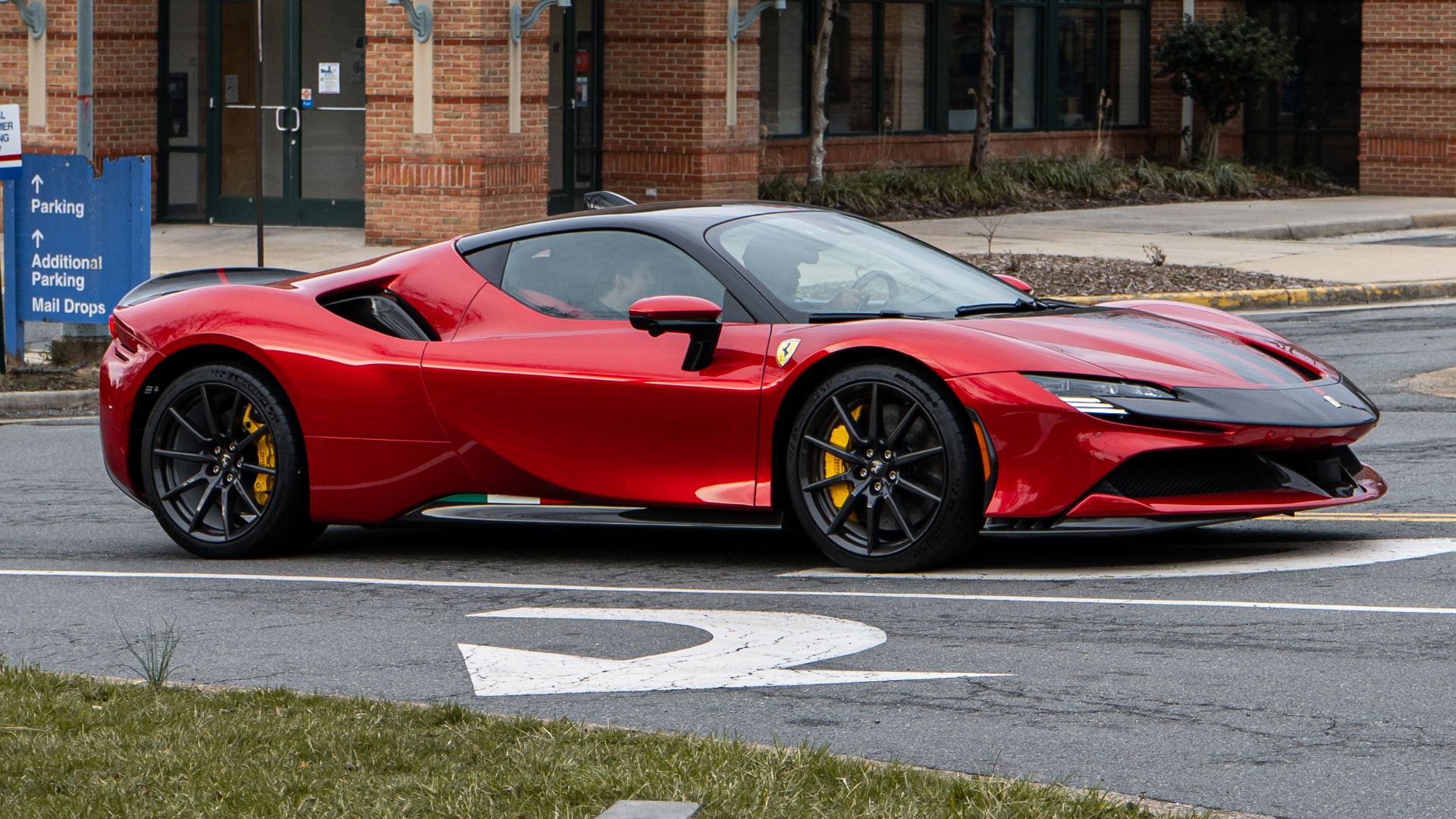 OWS Photography, Wikimedia Commons
OWS Photography, Wikimedia Commons
Shelby GT500 (S550): Carbon Wheels That Hurt to Curb
Track Pack owners know: Ford’s carbon-fiber wheels aren’t just exotic—they’re ~$25,000+ to replace as a set if purchased later, according to Ford Authority’s deep-dive on service pricing. Suddenly parking far from the curb makes sense.
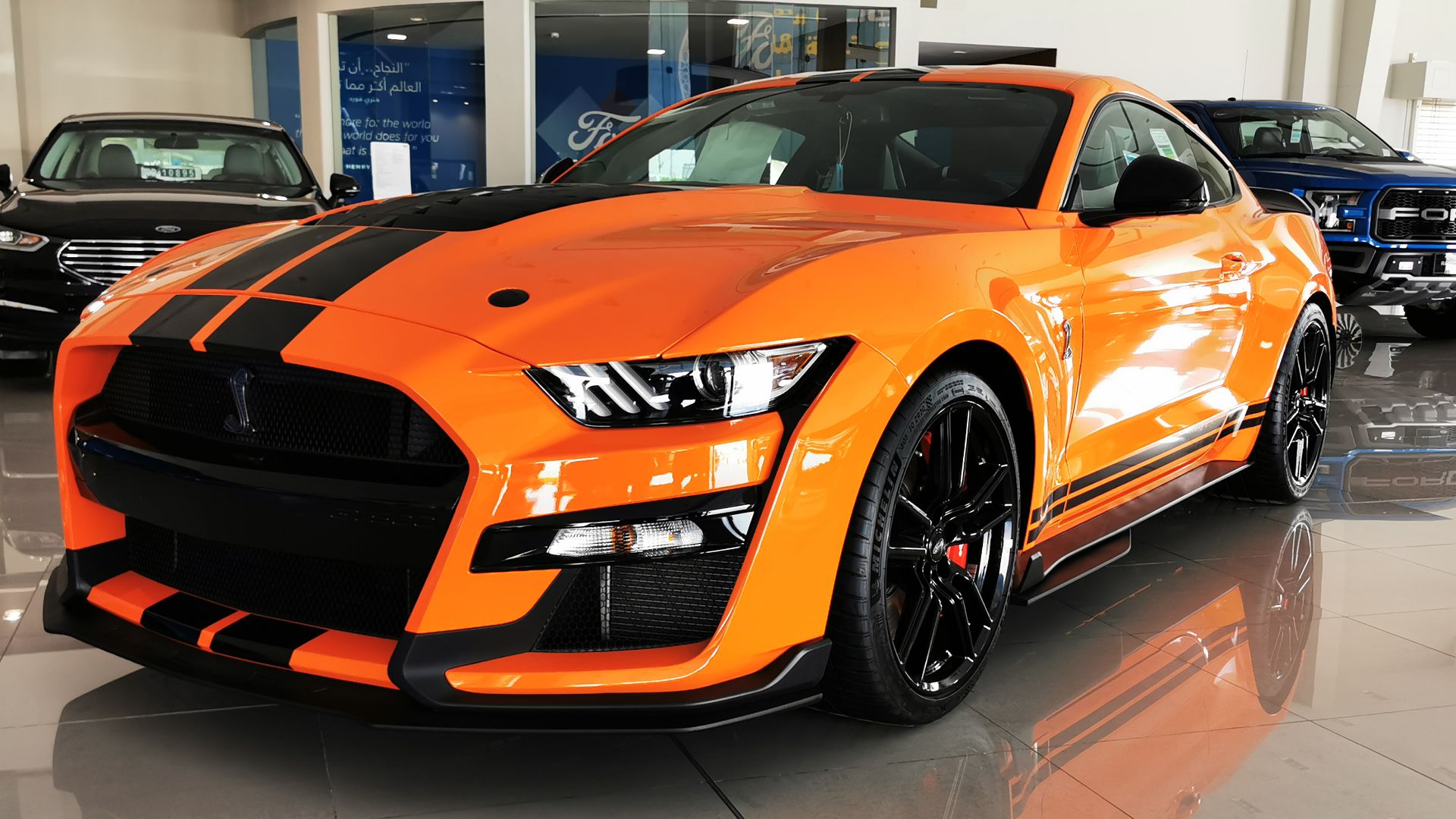 Mohammed Hamad, Wikimedia Commons
Mohammed Hamad, Wikimedia Commons
Ford GT (2nd Gen): Carbon-Fiber Wheel Option That Moves the Needle
Among factory options, the Ford GT’s carbon wheels were a true big-ticket add. Owners on the GT Forum cite roughly ~$25,000 for the option alone—before you get near tires or track abuse.
Bugatti Veyron: Turbochargers That Aren’t “Just Turbos”
Quad turbos are part of the Veyron mythos—and the bill. Reporting around the car’s upkeep cites ~$6,400 per turbo and ~$9,000 in labor for replacing two, underscoring how hypercar complexity multiplies costs.
McLaren’s Carbon Tubs: The Jewel You Never See
McLaren popularized carbon-fiber monocoques in road cars (the MonoCell), later moving tub production in-house at a £50 million composites center to control quality and tech. It’s the car’s structural heart—and among the most valuable single components any McLaren wears.
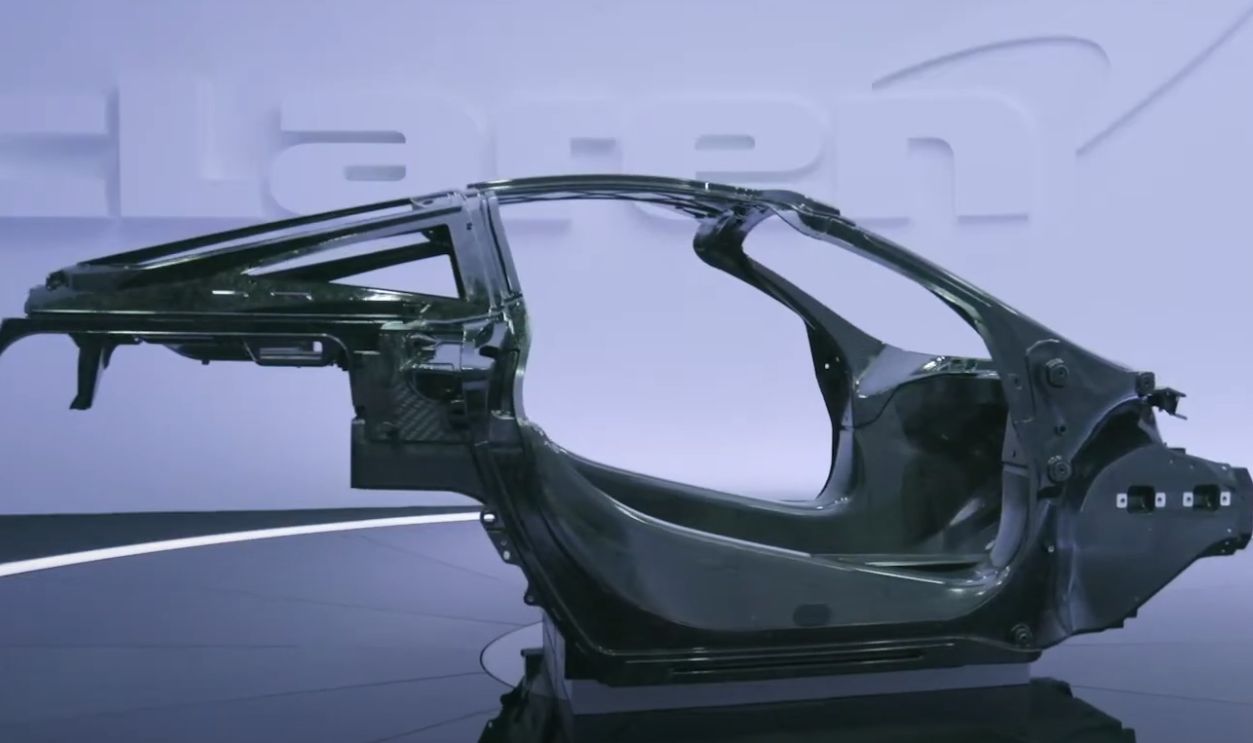 #2 Carbon Fibre Core | McLaren 720S, McLaren UAE
#2 Carbon Fibre Core | McLaren 720S, McLaren UAE
Aston Martin Valkyrie: Race-Grade CCM-R Brakes
A Valkyrie is basically a road-legal prototype. Its spec sheet name-checks massive CCM-R carbon-ceramic discs—hardware that would be at home on an LMP car and commands appropriately stratospheric component value, even if Aston doesn’t publish disc prices.
Koenigsegg One:1/Agera: Why Those Carbon Wheels Matter
Top Gear calls the Aircore wheels “pure engineering,” saving ~20 kg of unsprung mass across a set. That kind of weight saving transforms response—and helps justify why a single set can rival the cost of a new hot hatch.
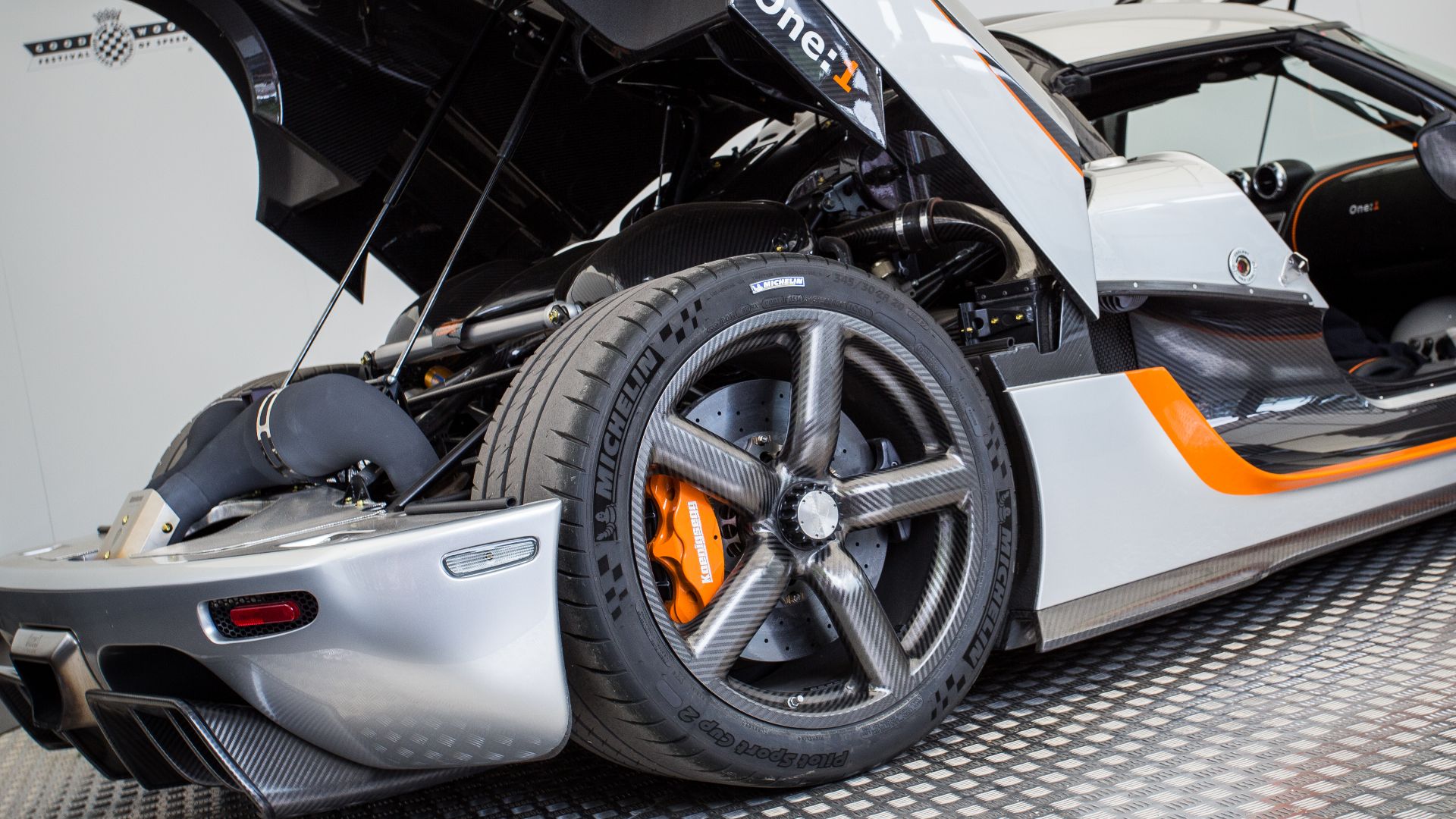 Michelin LIVE UK, Wikimedia Commons
Michelin LIVE UK, Wikimedia Commons
Porsche 918 Spyder: HV Battery Service Is a Specialist Game
Porsche has rolled out multi-stage HV-battery service and repair so owners aren’t forced into full pack replacements for minor issues—an acknowledgment of how valuable and complex the 918’s hybrid pack is. (Official messaging emphasizes repairability over retail pack price.)
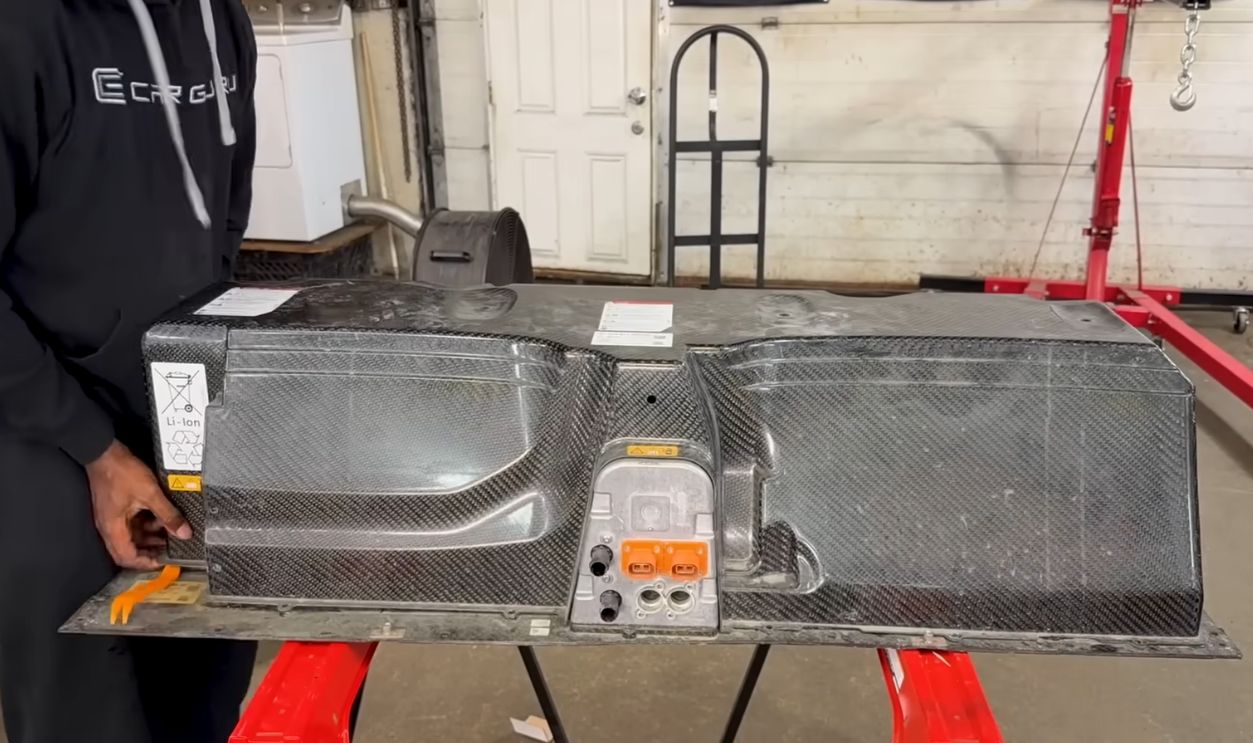 Inside a $2M Porsche 918 Battery That Survived a Fire, Rich Rebuilds
Inside a $2M Porsche 918 Battery That Survived a Fire, Rich Rebuilds
McLaren F1 & Ultra-Low-Volume Glass: Supply, Meet Demand
Back to the F1 for a lesson in scarcity economics: low volumes and unique curvature/lamination make bespoke glass insanely pricey and slow to source—hence that ~$30K–$33K windshield figure. For an owner, “chip repair” suddenly sounds like priceless preventative medicine.
Porsche PCCB: Why the Discs Cost What They Do
If you’ve ever wondered why carbon-ceramic rotors are five figures: they’re carbon fiber infused with silicon carbide at high temperature, then diamond-ground. Owners weighing replacements often cite $15K–$25K for a full set—and that is before labor—because the process (and longevity) is nothing like steel.
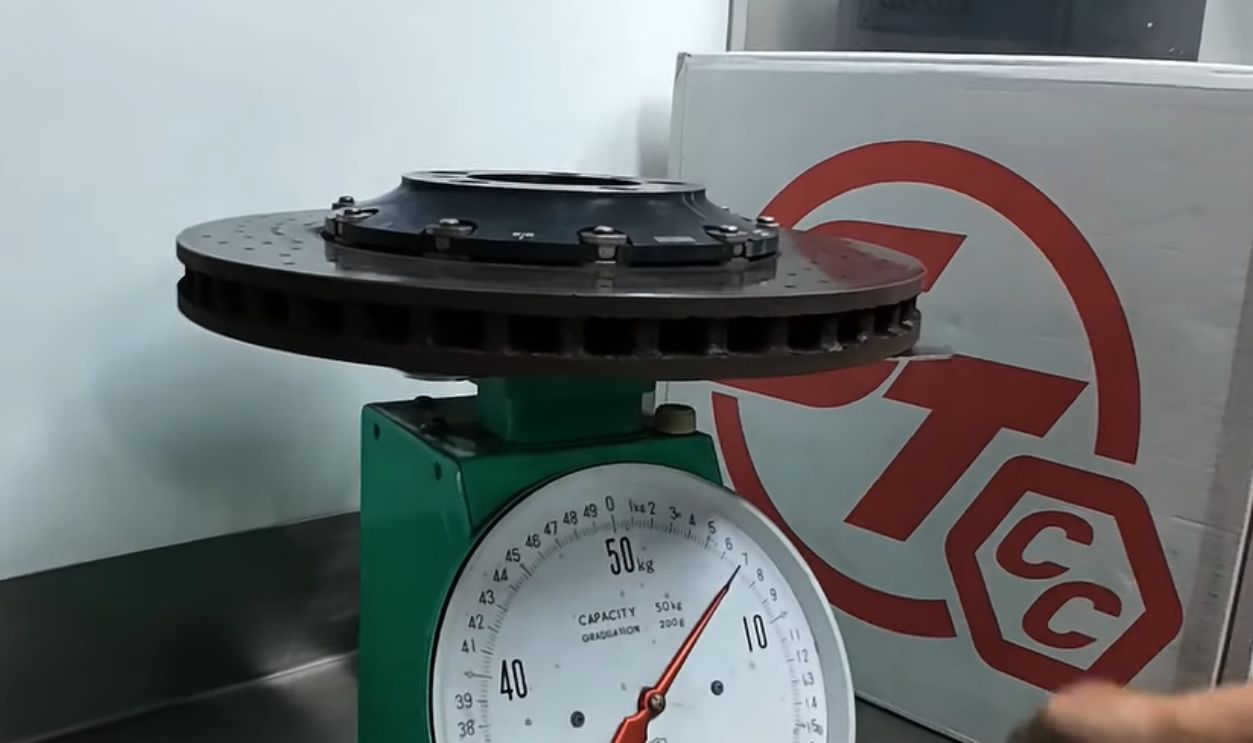 Surface Transforms vs PCCB vs OEM Steel - Best Porsche Brakes?, PR Technology
Surface Transforms vs PCCB vs OEM Steel - Best Porsche Brakes?, PR Technology
Lexus LFA: Even the “Small” Stuff Adds Up
Beyond the big-ticket V10, the LFA is a masterclass in boutique parts: $9,500 dampers, $8,000 bellhousing, and that $9,000 windshield. It’s a reminder: in ultra-low-production supercars, almost everything is a specialty item.
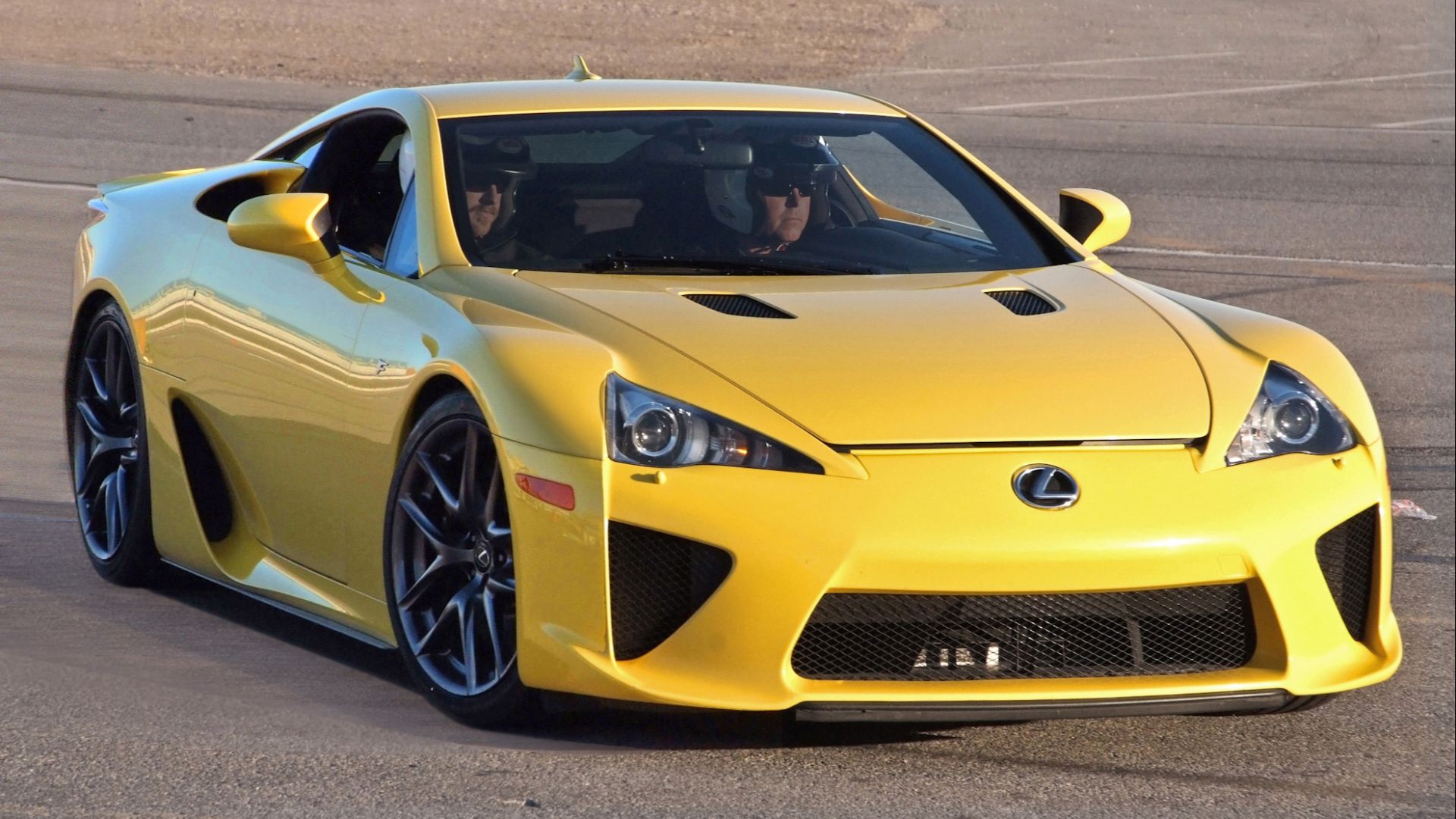 Motohide Miwa from USA, Wikimedia Commons
Motohide Miwa from USA, Wikimedia Commons
The Big Picture: Why These Parts Cost What They Do
From micro-volume manufacturing and exotic materials (hollow carbon wheels, silicon-carbide rotors) to speed-driven safety margins (Veyron wheels/tires) and next-gen electrification (Ferrari & Porsche HV packs), the most valuable parts combine scarcity, complexity, and performance stakes. Whether you’re curating a collection or just car-spotting at Cars & Coffee, remember: sometimes the most expensive part of a million-dollar car isn’t the bit you see—it’s the component keeping physics in check at 200 MPH.
What Car Part Do You Dread Replacing?
From Bugatti’s moonshot tires to the Lexus LFA’s symphonic V10, the most expensive car parts on Earth tell us something fundamental about automotive obsession: greatness comes at a cost. These components aren’t just pricey for the sake of it—they’re born of boundary-pushing engineering, exotic materials, and production runs that make rare whiskey look mass-produced. They’re also the invisible backbone of cars that can break records, stir souls, and define eras.
You May Also Like:
Three Great Cars For College Students
Cars So Problematic You'll Regret Buying Them
The Best Quick Guide To Buying Tires
Sources: 1, 2, 3

